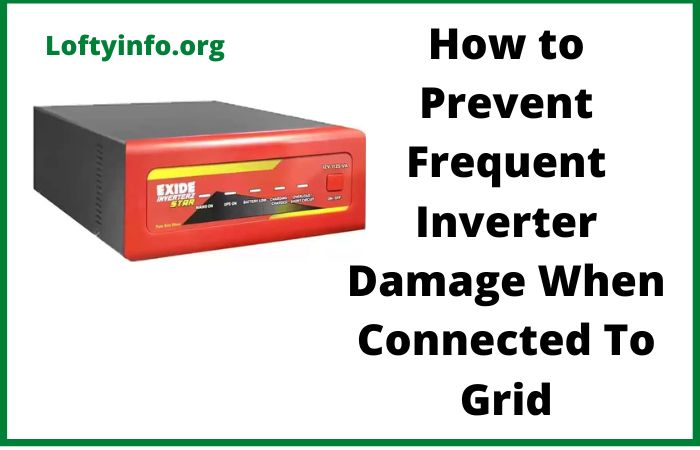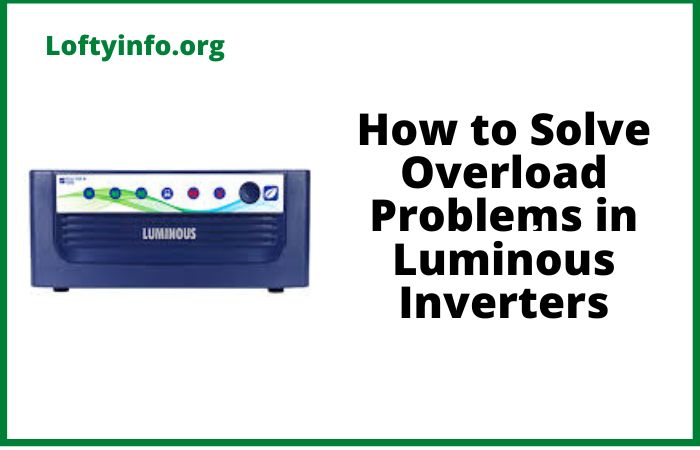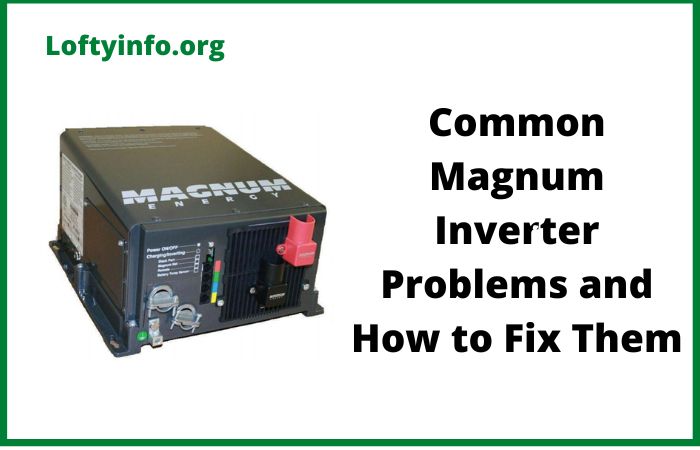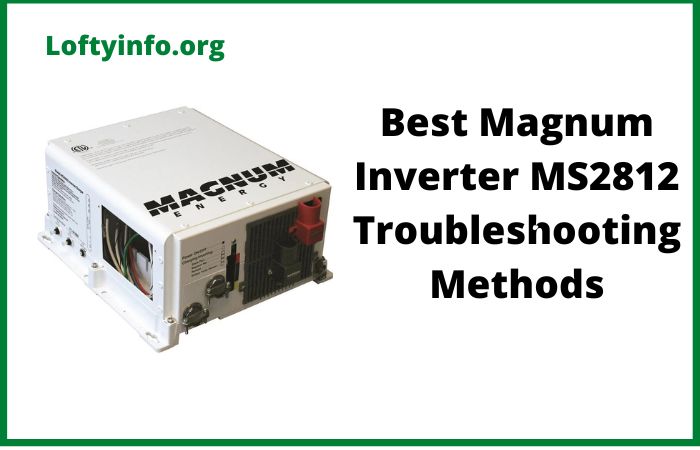How to Prevent Frequent Inverter Damage When Connected To Grid: 6 Essential Protection Strategies
Grid-tied inverters are the heart of any solar power system, converting DC electricity from solar panels into AC electricity that feeds into the electrical grid.
These sophisticated devices are vulnerable to various forms of damage that can result in costly repairs, system downtime and reduced energy production.
Understanding how to protect your grid-tied inverter is crucial for maximizing your solar investment and ensuring long-term system reliability.
6 Proven Ways to Prevent Grid-Tied Inverter Damage
1. Install Comprehensive Surge Protection Systems
Power surges represent one of the most significant threats to grid-tied inverters.
These voltage spikes can originate from lightning strikes, utility switching operations or sudden load changes on the grid.
A robust surge protection strategy should include multiple layers of defense.
Install Type 1 surge protective devices (SPDs) at the main electrical panel to handle large surges from lightning or utility operations.
Follow this with Type 2 SPDs specifically designed for solar applications, installed both on the DC and AC sides of the inverter.
These devices should have appropriate voltage ratings and surge current capacities for your specific system.
Consider installing a whole-house surge protector as an additional layer of protection.
This device protects not only your inverter but also other sensitive electronic equipment in your home.
Ensure all surge protection devices are properly grounded and regularly inspected for proper operation.
2. Implement Proper Voltage Regulation and Power Quality Management
Grid voltage fluctuations can cause significant stress on inverter components, leading to premature failure.
Modern grid-tied inverters have built-in protection against voltage variations but additional measures can provide enhanced protection.
Install an automatic voltage regulator (AVR) or voltage stabilizer upstream of your solar system if you experience frequent voltage fluctuations.
These devices maintain consistent voltage levels, reducing stress on inverter components. Monitor your local grid conditions regularly using power quality analyzers to identify recurring issues.
Work with your utility company if you notice persistent power quality problems.
Many utilities offer grid stabilization solutions or can address infrastructure issues that contribute to voltage instability.
Document any power quality issues as they can help support warranty claims if inverter damage occurs.
3. Ensure Optimal Thermal Management and Ventilation
Excessive heat is a primary enemy of electronic components in grid-tied inverters.
High operating temperatures accelerate component aging, reduce efficiency, and can cause catastrophic failures.
Proper thermal management is essential for inverter longevity.
Install inverters in shaded, well-ventilated locations away from direct sunlight.
If rooftop installation is necessary, provide adequate spacing from the roof surface and ensure proper airflow around the unit.
Consider installing additional ventilation fans or heat sinks if ambient temperatures regularly exceed manufacturer recommendations.
Regularly clean inverter cooling vents and fans to prevent dust accumulation that impedes heat dissipation.
Schedule professional cleaning and inspection at least annually or more frequently in dusty environments.
Monitor inverter operating temperatures using built-in diagnostics or external monitoring systems.
4. Provide Robust Weather Protection and Environmental Sealing
Environmental factors such as moisture, dust, salt spray and extreme temperatures can significantly impact inverter reliability.
Proper environmental protection is crucial, especially for outdoor installations.
Ensure inverters have appropriate IP (Ingress Protection) ratings for your installation environment.
Coastal areas require enhanced protection against salt corrosion, while dusty environments need superior particle protection.
Install weatherproof enclosures or covers when necessary to provide additional protection.
Regularly inspect and maintain environmental seals, gaskets and cable entry points. Replace damaged seals promptly to prevent moisture ingress.
Consider applying protective coatings to inverter housings in corrosive environments.
Ensure proper drainage around inverter installations to prevent water accumulation.
5. Maintain Proper System Grounding and Electrical Safety
Inadequate grounding is a common cause of inverter damage and can create serious safety hazards.
Proper grounding provides a path for fault currents and helps protect against electrical surges.
Install a comprehensive grounding system that meets local electrical codes and manufacturer specifications.
This should include equipment grounding, DC grounding (where required), and AC grounding connections.
Use corrosion-resistant grounding materials and maintain low-resistance connections.
Regularly inspect grounding connections for corrosion, looseness, or damage.
Test ground resistance annually using appropriate test equipment.
Ensure all metal components of the solar system are properly bonded to prevent potential differences that could damage equipment.
6. Implement Professional Installation and Regular Maintenance Programs
Many inverter failures can be traced back to improper installation practices or lack of regular maintenance.
Professional installation and ongoing maintenance are critical for preventing premature failures.
Hire certified solar installers who understand grid-tied inverter requirements and local electrical codes.
Proper installation includes correct DC and AC wiring, appropriate overcurrent protection, proper grounding and adherence to manufacturer spacing and ventilation requirements.
Establish a regular maintenance schedule that includes visual inspections, connection tightening, cleaning and performance monitoring.
Document all maintenance activities and keep detailed records of system performance. Many inverter failures can be prevented through early detection of developing problems.
Professional maintenance should include thermal imaging inspections to identify hot spots, electrical testing of connections and protection devices and comprehensive system performance analysis.
Consider enrolling in manufacturer maintenance programs or working with certified service providers.
Additional Best Practices for Inverter Protection
Beyond the six primary strategies, consider implementing advanced monitoring systems that provide real-time alerts for system anomalies.
Smart monitoring can detect issues before they cause permanent damage, allowing for proactive intervention.
Maintain detailed documentation of your solar system, including installation records, maintenance logs, warranty information and performance data.
This documentation is valuable for troubleshooting, warranty claims, and system optimization.
Stay informed about manufacturer updates, recalls and recommended maintenance procedures.
Register your equipment with manufacturers to receive important notifications and ensure warranty coverage.
Conclusion
Protecting your grid-tied inverter from damage requires a comprehensive approach that addresses the various threats these devices face.
By implementing proper surge protection, voltage regulation, thermal management, environmental protection, grounding systems and maintenance programs, you can significantly extend inverter life and maximize your solar system’s return on investment.
Remember that prevention is always more cost-effective than replacement.
The strategies outlined in this guide represent proven methods for reducing inverter failure rates and ensuring long-term system reliability.
Regular investment in protection and maintenance will pay dividends through improved system performance, reduced downtime and extended equipment life.
Consider consulting with qualified solar professionals to assess your specific installation and develop a customized protection strategy.
Every solar system is unique and professional guidance can help identify site-specific risks and optimal protection measures for your grid-tied inverter system.
This will help prevent frequent inverter damage when connected to grid.






